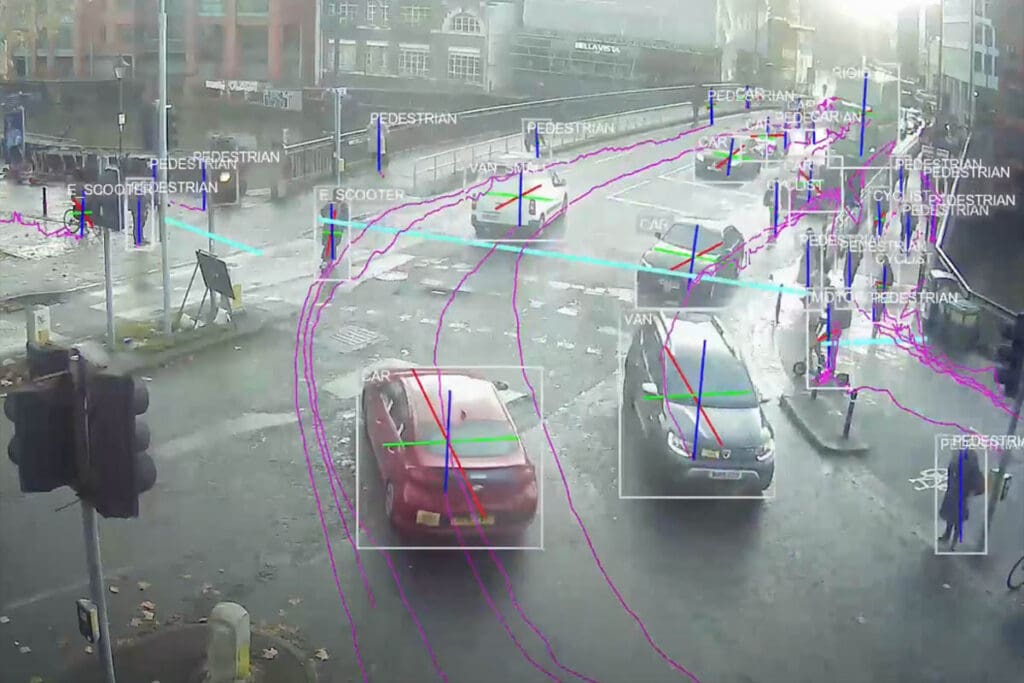Near Miss Traffic Monitoring Technology Reaches Australia

London, UK
New ‘near miss’ traffic monitoring software has been released in Australia to help transport authorities identify and analyse traffic hotspots that are particularly dangerous for cyclists … before they cause a major accident.
UK-based company VivaCity Labs last month introduced its Automated Near Miss reporting capability for active transport to Australia, as part of its IA traffic monitoring and analysis system.
VivaCity’s smart road safety product manager, Harsh Talati, said the system – which is capable of distinguishing between many different types of vehicles and road users – uses three methods of analysis and simulation to identify when a collision involving a cyclist is narrowly averted.
He said a number of verified near misses in the same location, identified and recorded according to objective parameters, is a reliable indication of a dangerous road environment where a more deadly outcome was likely if the problem is not addressed.
That enables traffic authorities to find areas of danger and remedy them before deadly accidents and serious damage occurs.
VivaCity was launched in 2015, the product of three cycling enthusiasts who met while studying at Cambridge University.
The trio wanted to find a way make London roads safer and easier to cycle and created an AI traffic monitoring and measuring system that goes far beyond the old traffic counters that are capable of only measuring vehicle numbers and speeds.
VivaCity uses a small computer-driven sensor mounted on roadside poles to scan the road and footpath and create a 3D analysis of that space. It measures the length, width and height of vehicles and pedestrians passing through the space to differentiate between 10 different road user types, including cars, trucks, buses, bicycles and pedestrian, as is currently 97% accurate in its identification.
The system can then separate those different road user classes in its vehicle counts and uses its AI to identify and record how vehicles interact with each other and the road environment.
Harsh said this interpretation vastly improved the ability of planners and engineers to manage road safety and traffic flow.
The system is being used by three councils in Victoria – the cities of Melbourne, Yarra and Port Phillip – and VivaCity is about to embark on a project with Tasmania’s Department of State Growth.
He said the Near Miss capability takes the system one step further, measuring cyclists’ proximity to motor vehicles and analysing their respective trajectories to identify when a collision was likely if one or more of the vehicles had not suddenly changed their direction or speed.
He said bicycle are the first vehicles covered by the Near Miss feature.
“There are a number of reasons for this. The number of injuries that occur because of interactions between cyclists and motor vehicles is quite high,” Harsh said.
“In addition, there is a lot of research already present about the methods and the different categories of near misses involving bikes, so we have a lot of help and we want to use that as our foundation to build our first release for the Near Miss feature.
“We will then use that release to be able to show all active transport modes, so e-scooters and pedestrians as well, and their interactions with motor vehicles.
“Then in the future, we’ll aim for some integration of vehicle versus vehicle, although they are modelled very differently.”
He said there was a dual motivation for developing the Near Miss software.
“We want to save lives and create safety interventions, to create safe environments for people to travel,” he said.
“We also want to promote active transport, by making pedestrians and cyclists feel safe on the roads.”
He said the Near Miss software, which comes at an additional cost, is now operational at 10 locations in the UK and a handful of sites in New York.
The company is ready to roll it out in Australia, as soon as local authorities are ready to put it into action.
